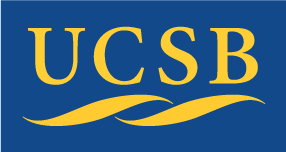|
Geometry, Topology, and Physics Seminar, Spring 2010
Organizers:
Andreas Malmendier
and Dave Morrison.
Meets 4:00 - 5:30 p.m. Fridays in South Hall 6635.
This quarter, due to the KITP workshop String Theory at the LHC and in the
Early Universe, this seminar will only meet occasionally between 03/29/10 and 05/14/10. Watch this space (or the email
announcements) for information about upcoming seminars.
Other Quarters: [
Fall, 2021;
Winter, 2020;
Fall, 2019;
Spring, 2018;
Winter, 2018;
Fall, 2017;
Spring, 2017;
Wnter, 2017;
Fall, 2016;
Spring, 2016;
Winter, 2016;
Fall, 2015;
Spring, 2015;
Winter, 2014;
Fall, 2013;
Fall, 2012;
Fall, 2011;
Winter, 2011;
Spring, 2010;
Winter, 2010;
Fall, 2009;
Spring, 2009;
Winter, 2009;
Fall, 2008;
Spring, 2008;
Winter, 2008;
Fall, 2007;
Spring, 2007;
Winter, 2007;
Fall, 2006
]
| Apr. 30 |
David Morrison (UCSB)
Abstract:
"F-theory" is a construction in string theory based on elliptic fibrations in algebraic geometry. The study of F-theory over the past 14 years has raised various new
questions in algebraic geometry, not all of which have been completely resolved. A recent resurgence of interest in F-theory among string theorists has renewed the
interest in some of these questions.
In this week's lecture, I will introduce this topic in terms intended for both mathematicians and physicists. In subsequent weeks, we will learn about various more
specialized questions in mathematical F-theory.
Audio [ mp3,
wma ];
Lecture
notes.
|
| May 14 |
David Morrison (UCSB)
Abstract:
In the first lecture, I explained (among other things) how Kodaira's theory of singular fibers in elliptic pencils can be used to assign a reductive group to every
elliptic fibration (which is the gauge group in the corresponding F-theory model).
In this lecture, the focus will be on assigning a representation of that group to the fibration (which represents the massless matter in the corresponding F-theory
model). Along the way, we will meet anomalies in 6-dimensional physical theories and explain what they mean for the elliptic fibration.
Audio [ mp3,wma ];
Lecture
notes.
|
| May 21 |
Sakura Schafer-Nameki (KITP)
Abstract:
I will give an overview of the recent paper
Evidence for F(uzz) Theory by Heckman and Verlinde, which argues
that F-theory in the decoupling limit MPl → ∞ is described by a
Fuzz-theory. The theory of 7-branes wrapping non-commutative four-cycles is
developed and phenomenological implications of this setup are analyzed.
Audio [ mp3,wma ];
Lecture notes.
|
| May 28 |
David Morrison (UCSB)
Abstract:
Many of the recent applications of F-theory to building explicit models for
4-dimensional physics have been constructed using neighborhoods of
contractible divisors as the base of the associated elliptic fibration. We
will give an introduction to the mathematics and physics of contractible
divisors on the bases of elliptic fibrations, starting with elliptic
threefolds (which have an application to 6-dimesional physics) and then
proceeding to elliptic fourfolds (which have an application to 4-dimensional
physics).
Audio [ mp3,wma ];
Lecture
notes.
|
|
|



